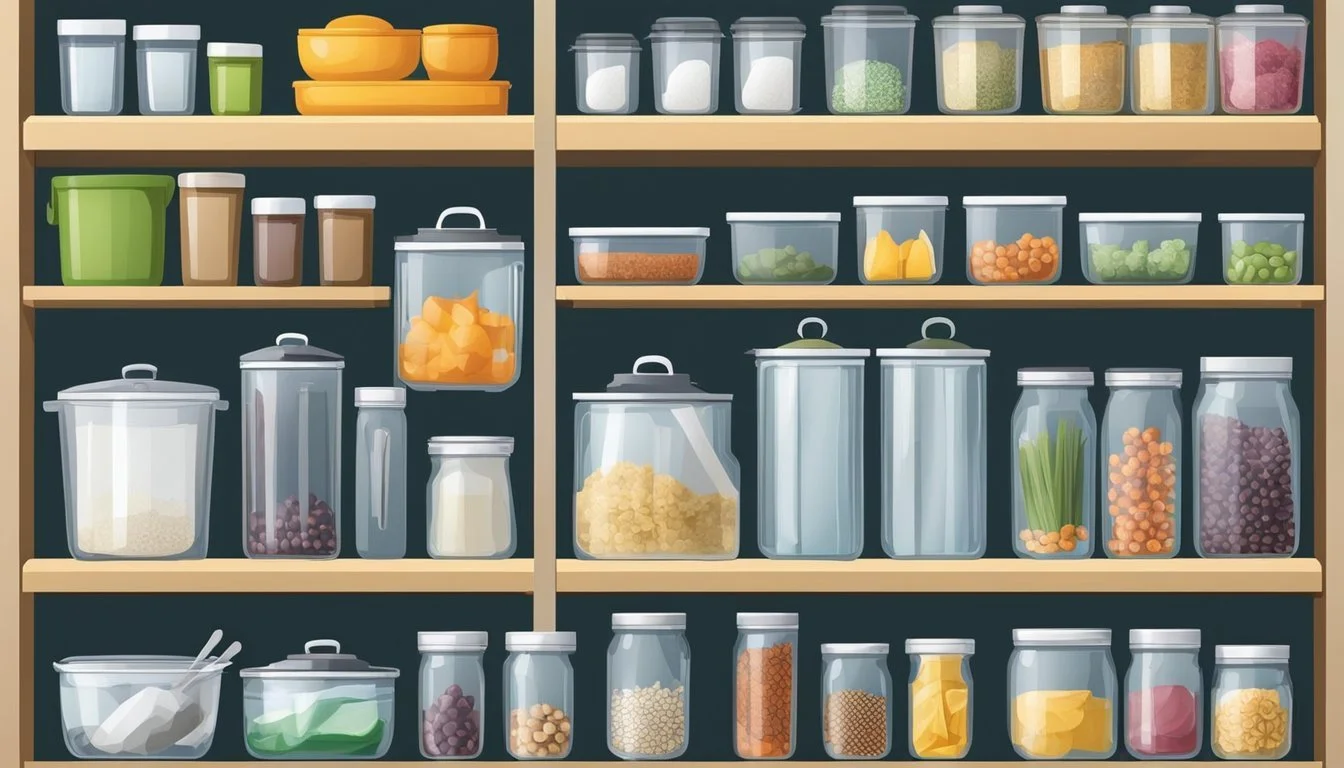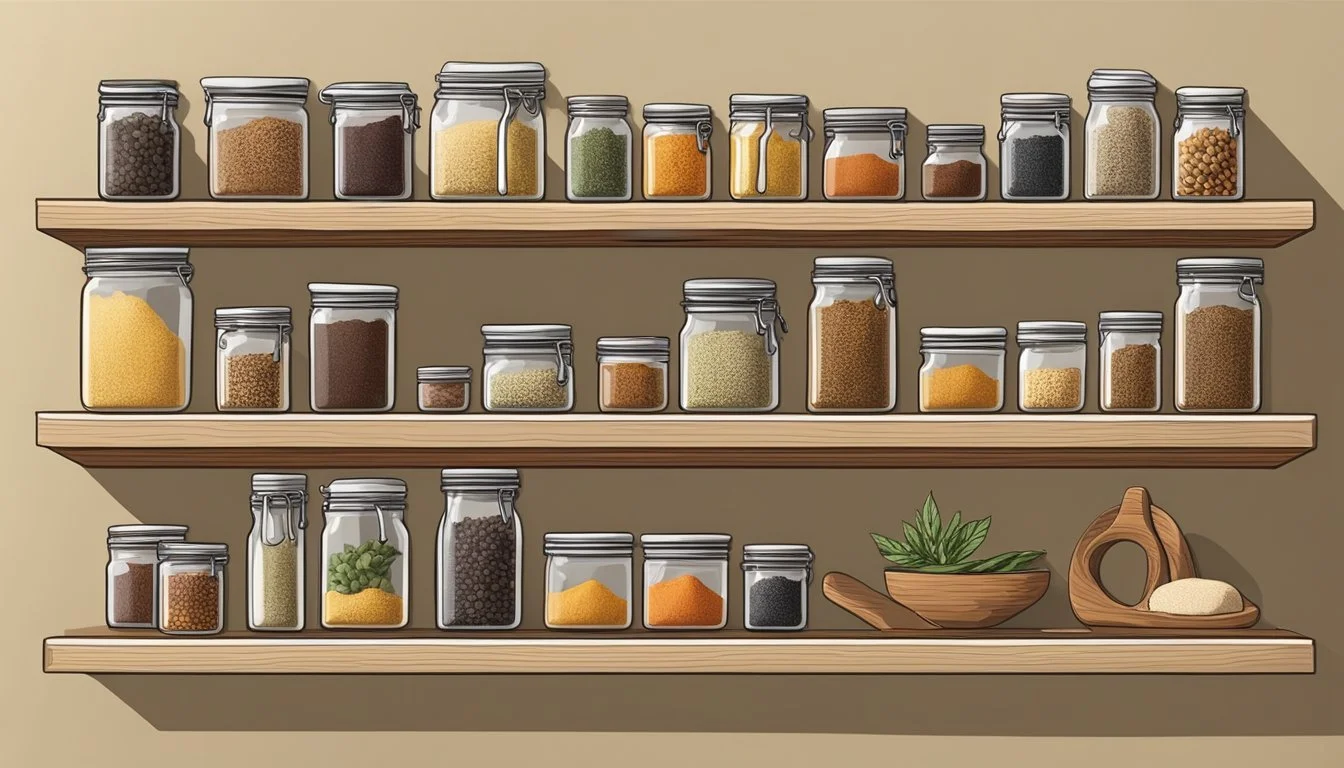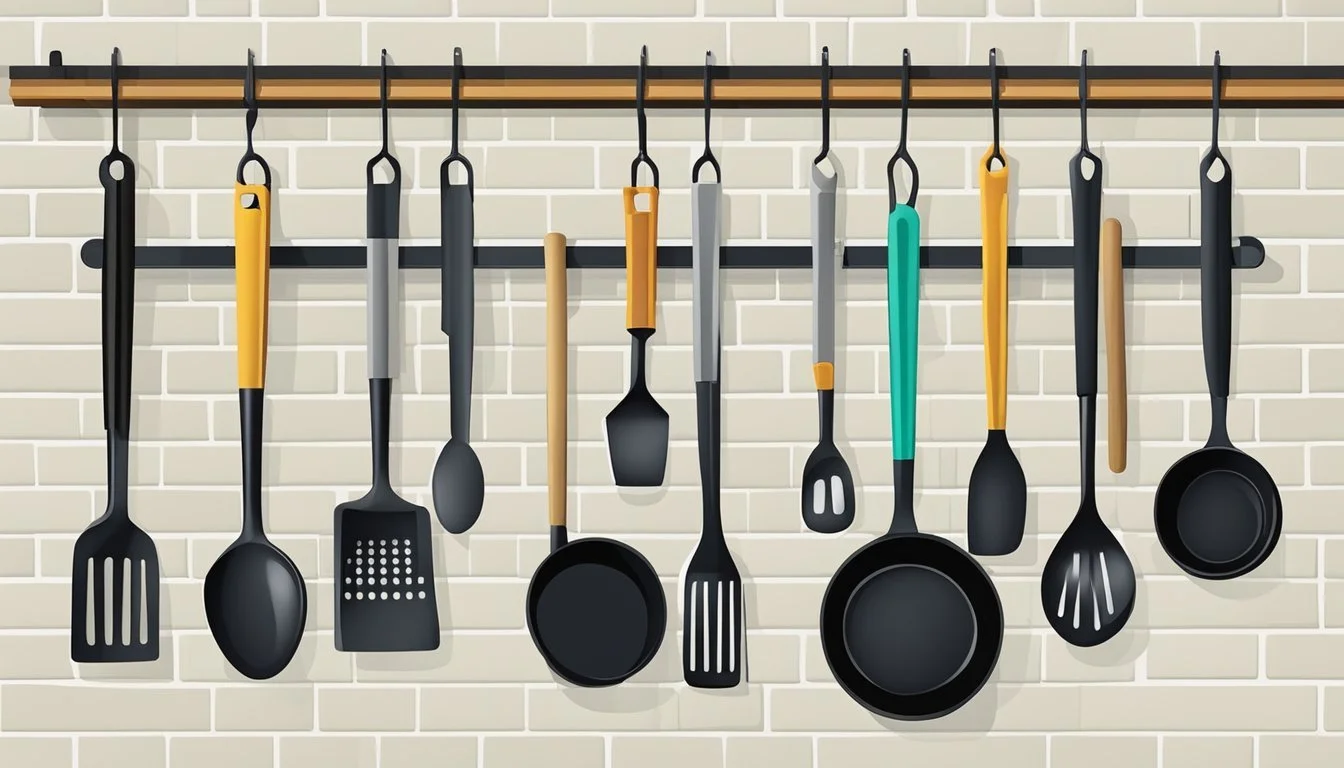10 Ways to Use Wall Space for Kitchen Organization
Maximize Efficiency and Style
Maximizing kitchen space is essential, and one of the most effective ways to achieve an organized cooking area is by utilizing wall space. Walls offer a blank canvas for storage solutions that keep countertops clear and items neatly arranged. By implementing strategic wall storage, individuals can transform the kitchen from a cluttered workstation into a model of efficiency where everything has its place.
Innovative wall storage ideas can accommodate a variety of kitchen tools and ingredients, from the smallest utensils to bulky pots and pans. Hooks, open shelving, and wall-mounted racks not only serve as practical solutions for organizing but also contribute to the aesthetic appeal of the kitchen. They allow for easy access to frequently used items, making food preparation smoother and more enjoyable.
Wall-mounted storage adapts to different kitchen layouts and sizes, turning unused vertical areas into valuable real estate. Whether it's a set of hooks for aprons and towels or tailor-made shelving for spices and cookbooks, these solutions ensure that every inch of the kitchen serves a purpose without compromising on design or functionality.
Maximizing Wall Space
Maximizing kitchen wall space is about creating functional storage and keeping essential items within reach. A well-organized wall not only saves floor space but also streamlines the cooking process.
Installing Open Shelving
Open shelving provides an accessible and aesthetically pleasing way to store dishes, mugs, and cookbooks. For a cohesive look, shelves should be installed at a consistent height and arranged to accommodate items of varying sizes. This organization method not only utilizes vertical space, but it also makes it easier to find what one needs without rummaging through cabinets.
Using Wall-Mounted Racks
Wall-mounted racks are excellent for hanging pots and pans, utensils, and cutlery. By fixing hooks to these racks, one can hang kitchen tools such as a paring knife or a serrated knife, keeping them handy for meal prep. Racks can be selected in materials that match the kitchen's style, and they make use of frequently overlooked wall space.
Implementing Pegboard Systems
A pegboard system introduces a flexible storage solution that can be customized for various kitchen items. It uses a combination of hooks and shelves to organize cookware and utensils efficiently. The versatility of a pegboard means that as the needs of the kitchen change, so can the arrangement of items, making it an adaptable and space-conscious choice.
Enhancing Cabinet Storage
Maximizing storage in kitchen cabinets not only organizes the space but streamlines the culinary process. Enhancements like door utilization, pull-out shelves, and drawer dividers transform cluttered cabinets into efficient storage systems.
Utilizing Door Space
The interior of cabinet doors presents an underused opportunity for additional organization. Spices and flatware can be neatly arranged on magnetic spice racks or hooks on the inside of doors. This approach not only saves shelf space but also keeps these items within easy reach.
Adding Pull-Out Shelves
Pull-out shelves can revolutionize kitchen cabinet organization by improving visibility and access to items tucked at the back. With this system, users can easily sort and retrieve small appliances, baking supplies, and dry goods, preventing the common clutter that accumulates in deep cabinets.
Incorporating Drawer Dividers
Drawer dividers are essential to maintain order in drawers dedicated to utensils and cutting boards. By creating specific compartments, they ensure that every item has a designated spot, simplifying the search for knives or a knife block without rummaging through a jumbled drawer.
Integrating Vertical Organizers
Maximizing kitchen space efficiently often involves leveraging vertical storage solutions. Employing stackable bins and baskets can turn empty walls into practical storage hubs, keeping essentials within reach and countertops clutter-free.
Employing Stackable Bins and Baskets
Stackable bins and baskets are ideal for making the most of vertical space in a kitchen. These organizers can be arranged on shelving units, attached to the wall, or hung over doors to create additional storage. For instance, wire or plastic bins can be ideal for housing items such as fresh fruits or vegetables, ensuring they are visible and accessible while also promoting air circulation to keep them fresh. Baskets, on the other hand, can be used for storing items like bread or snacks, helping to maintain order and minimize clutter.
Tips for Utilizing Bins and Baskets:
Visibility: Choose open-front bins where the contents are easily seen and reached.
Accessibility: Stack baskets at a convenient height, ensuring frequently used items are at arm's length.
Labeling: Label each bin or basket to simplify finding and returning items to their designated spots.
Material: Opt for materials that accommodate the weight of the items stored and promote good hygiene and easy cleaning.
By integrating these vertical storage solutions, individuals can free up valuable counter space and enhance the overall functionality of their kitchen.
Optimizing Counter Space
Keeping kitchen counters clear is essential for a functional cooking space. Wall-mounted solutions and strategic appliance choice are critical to achieving this.
Selecting Wall-Mounted Dish Racks
A wall-mounted dish rack, positioned above the sink, can save valuable counter space while ensuring dishes dry efficiently. Stainless steel models offer durability and resist rust, while designs with removable trays facilitate easy cleaning. Consider racks with adjustable tiers to accommodate a variety of dish sizes.
Features to look for in a wall-mounted dish rack:
Adjustable tiers: for different dish heights
Removable drainage tray: for easy cleanup
Stainless steel construction: for longevity and rust resistance
Choosing Multifunctional Appliances
Investing in multifunctional small appliances reduces clutter. For example, an oven with a built-in microwave function eliminates the need for two separate machines. Similarly, a hot water tap can replace a kettle, freeing up more counter space.
Benefits of multifunctional appliances:
Space-saving: Combines multiple functions into a single device
Cost-effective: Reduces the need to purchase separate appliances
Efficiency: Streamlines kitchen tasks through a single appliance
Including a lazy susan in cupboard corners can also aid in organization, allowing easy access to spices and condiments without taking up valuable counter space.
Sorting Goods with Clear Containers
Clear containers are indispensable for an organized kitchen, offering both visibility and uniformity. They turn cabinet chaos into neatly arranged items, making it easier to access and manage pantry staples.
Labeling for Efficiency
With clear containers, labeling becomes effortless and highly efficient. Home cooks can quickly identify contents without opening multiple canisters, saving time and maintaining order. Using labels also helps in keeping track of expiration dates and quantities at a glance.
Labeled Containers: One adds detailed labels to each container, including the item name and expiration date if relevant.
Uniformity in Labeling: For visual harmony and ease of reading, one should use a consistent label size, font, and color across all containers.
Clear food containers and canisters not only streamline the appearance of a pantry but also preserve the freshness of ingredients by providing an airtight seal. Acrylic dividers within drawers or on shelves can further categorize items, turning a cluttered space into an exemplar of kitchen organization.
Organizing Cookware and Bakeware
Maximizing vertical space in the kitchen allows for efficient storage of cookware and bakeware. By implementing wall-mounted solutions, individuals can keep pots, pans, and baking essentials tidy and within easy reach.
Mounting Pot Racks
One can install a hanging pot rack to suspend cookware overhead. This not only frees up cabinet space but also turns pots and pans into a decorative element. It's important to place the rack in a spot where it won't obstruct daily activities and to secure it firmly to support the weight of the cookware.
Pot Lid Storage: To accompany a hanging pot rack, utilize hooks or a rail to store pot lids alongside the pots.
Placement Tips:
Position pot racks near the stove for convenience.
Ensure there is enough head clearance to prevent accidents.
Storing Baking Sheets and Tins
For organizing baking sheets, muffin tins, and other bakeware, vertical storage racks inside cabinets offer an organized approach. These racks can be installed inside cabinet doors or on the walls to make efficient use of otherwise unused space. One can also consider:
Dividers: Use cabinet dividers that create slots for each baking sheet and tin, allowing easy separation and removal.
Alternative Organizers:
A file organizer or dish rack can serve as an impromptu solution.
Stacking racks with space for cookie sheets and muffin tins keep bakeware in order without taking up too much room.
By focusing on vertical solutions like mounting pot racks and employing cabinet organizers for bakeware, kitchens become more functional and visually appealing.
Streamlining the Kitchen Island
The kitchen island often serves as the command center of culinary activity, and its organization can significantly impact the functionality of the kitchen space.
Creating Functional Zones
To enhance efficiency, one can divide the kitchen island into designated zones for specific tasks or items. By doing so, individuals can easily access what they need for meal preparation or serving.
Preparation Zone: Reserve an area for chopping vegetables and assembling ingredients. Include containers or built-in compartments for various cutting tools and mixing bowls.
Cooking Zone: If the island incorporates a stove top, keep cooking utensils, pots, and pans within arm's reach. Magnetic strips or hooks can hold small tools, while a hanging rack above may store pots and pans.
Serving Zone: Allocate space for serving essentials such as serveware, napkins, and placemats. A drawer or a slide-out basket underneath the countertop ensures these items are handy when it's time to dish out meals.
Eating Zone: For islands doubling as dining areas, maintain a clear section for seating. Organizers or dividers can neatly store cutlery and condiments without cluttering eating spaces.
By creating these functional zones, homeowners not only enhance the utility of their kitchen island but also maintain an orderly and accessible environment conducive to both cooking and socializing.
Managing Small Items and Ingredients
In any kitchen, managing small items and ingredients with efficiency can reduce visual clutter and maximize space. These strategies can be particularly clever for tight spaces, offering both accessibility and aesthetics.
Using Magnetic Holders
Magnetic knife holders serve more than their intended purpose. They offer a secure spot for knives, freeing up valuable drawer space. A knife magnet strip can also be an ideal solution for keeping metal utensils such as whisks, spatulas, and ladles within arm's reach. For spices, consider magnetic spice jars that can attach to the fridge or a metal board, keeping countertops clear and ingredients visible and accessible.
Implementing Lazy Susans and Trays
Lazy Susans are a classic tool for organizing ingredients in a way that makes everything easy to find with a simple spin. They work perfectly for corners of cabinets or on countertops for frequently used spices and condiments. Trays, on the other hand, neatly contain groups of small items, making it easy to transport them as needed. They can be utilized inside cabinets to organize groups of ingredients, creating a mobile storage option that can be moved to the workspace as needed.
Utilizing Hanging Space
Wall spaces in kitchens provide a vertical landscape perfect for organization and aesthetics. By utilizing hanging space, individuals can free up cabinet areas and make commonly used items more accessible.
Opting for Hanging Pot Racks
One can optimize their kitchen organization by installing hanging pot racks. These racks can be affixed to the ceiling or walls and are ideal for keeping pots and pans within easy reach. This not only saves valuable cupboard space but also turns cookware into a visual feature. It is important to ensure the rack is securely mounted to support the weight of the cookware.
Placement options:
Above the kitchen island
Against the backsplash
Over the sink if space allows
Arranging Stemware and Wine Racks
Using wall space to organize stemware and wine racks not only showcases a fine collection but also serves the practical purpose of storage. A wall-mounted wine rack complemented with hanging stemware features can optimize underutilized vertical spaces like the sides of cabinets or unused backsplash areas.
Benefits:
Prevents clutter
Easy access to glasses and bottles
Considerations for installation:
Adequate height to avoid accidental bumps
Proximity to the fridge or dining area for convenience
Adopting Kitchen Organization Principles
Kitchen organization is paramount for a functional and aesthetically pleasing space. Strategic planning can transform cluttered counters and overflowing drawers into streamlined, purposeful areas. Clever storage solutions that incorporate minimalism and adaptability are key.
Embracing Minimalism
One is advised to apply the Marie Kondo principle of keeping only what brings joy or is necessary. Here's a methodical approach:
Sort: Begin by sorting kitchen items into categories.
Assess: Evaluate each item for its frequency of use and joy factor.
Purge: Discard duplicates, unused gadgets, and anything that does not serve a practical purpose or emotional value.
Emphasize Clear Surfaces: A minimalist kitchen showcases uncluttered countertops, which involves storing appliances not used daily and keeping only essential items at arm's reach.
Adjusting Shelves for Customization
Adjustable shelves give one the flexibility to store items of various sizes efficiently, promoting optimal organization.
Measure: Ensure the spacing between shelves matches the height of stored items to avoid wasted vertical space.
Customize: Use shelf inserts or risers to create additional layers for smaller items.
Add Variety: Incorporate a blend of open shelving for frequently used items and closed cabinets for less attractive necessities.
Visual Accessibility: Arranging items on shelves where they are easily visible and accessible streamlines the cooking process, saving time and effort.









